Key Takeaways
1. Embrace a pragmatic philosophy: Be an early adopter, critical thinker, and lifelong learner
Every day, work to refine the skills you have and to add new tools to your repertoire.
Critical thinking is essential. Pragmatic programmers approach problems with a questioning mindset, constantly evaluating the validity of information and challenging assumptions. They strive to understand the broader context of their work and its potential implications.
Adaptability is key. The tech landscape evolves rapidly, so pragmatic programmers:
- Embrace new technologies and methodologies
- Experiment with different approaches
- Learn from both successes and failures
- Continuously refine their skills and knowledge
Cultivate a growth mindset. View challenges as opportunities for learning and improvement. Seek out diverse perspectives and be open to constructive feedback. Remember that becoming a pragmatic programmer is an ongoing journey, not a destination.
2. Invest in your knowledge portfolio: Continuously learn and diversify your skills
An investment in knowledge always pays the best interest.
Treat knowledge like an investment. Just as you would manage a financial portfolio, actively manage your knowledge and skills. Regularly invest time in learning new technologies, languages, and concepts. Diversify your skill set to remain versatile and valuable in a changing landscape.
Strategies for knowledge investment:
- Learn a new programming language every year
- Read technical books and articles regularly
- Attend conferences and workshops
- Participate in open-source projects
- Experiment with side projects
- Share your knowledge through blogging or speaking
Balance your portfolio between established technologies and emerging trends. Be prepared to adapt as the industry evolves, but don't chase every new fad. Focus on fundamental concepts that transcend specific tools or frameworks.
3. Communicate effectively: Practice active listening and adapt your message to your audience
It's both what you say and the way you say it.
Tailor your communication. Understand your audience's background, needs, and expectations. Adjust your language, level of technical detail, and presentation style accordingly. Use analogies and metaphors to explain complex concepts to non-technical stakeholders.
Practice active listening. Effective communication is a two-way street. Pay attention to both verbal and non-verbal cues. Ask clarifying questions and paraphrase to ensure mutual understanding. Be open to feedback and willing to adjust your approach based on others' input.
Key communication skills:
- Write clear, concise documentation
- Give engaging presentations
- Facilitate productive meetings
- Negotiate and resolve conflicts
- Collaborate effectively in diverse teams
- Use visual aids to complement verbal explanations
Remember that communication extends beyond words. Your code, commit messages, and project organization are all forms of communication with your future self and other developers.
4. Write clean, flexible code: Follow DRY principle and design for change
Good Design Is Easier to Change Than Bad Design
Embrace modularity and loose coupling. Design your code with change in mind. Create small, focused modules with clear responsibilities. Minimize dependencies between components to make it easier to modify or replace parts of the system without affecting others.
Follow the DRY (Don't Repeat Yourself) principle. Avoid duplicating knowledge throughout your codebase. When you find yourself writing similar code in multiple places, abstract it into a reusable function or module. This makes your code easier to maintain and reduces the risk of inconsistencies.
Design principles for flexible code:
- Single Responsibility Principle
- Open/Closed Principle
- Dependency Inversion
- Composition over Inheritance
- Program to interfaces, not implementations
Use design patterns judiciously to solve common problems, but don't force them where they don't fit. Always consider the trade-offs between flexibility and complexity. Aim for code that is easy to understand and modify, rather than trying to anticipate every possible future change.
5. Solve problems through feedback loops: Break down complex issues and iterate
Use tracer bullets to find the target.
Start with a minimal implementation. When faced with a complex problem, begin by creating a simple, end-to-end solution that addresses the core functionality. This "tracer bullet" approach allows you to quickly validate your understanding of the problem and get feedback from stakeholders.
Iterate and refine. Use the insights gained from your initial implementation to guide further development. Break the problem down into smaller, manageable pieces and tackle them incrementally. Continuously gather feedback and adjust your approach as needed.
Problem-solving techniques:
- Prototyping to explore ideas
- Divide and conquer approach
- Root cause analysis
- Pair programming for collaborative problem-solving
- Rubber duck debugging
- Timeboxing to maintain focus
Embrace uncertainty and be willing to pivot when necessary. Remember that solving complex problems often involves learning and discovery throughout the process. Stay flexible and open to new information as it emerges.
6. Master your tools: Learn powerful text editors and version control systems
Use the power of command shells.
Invest time in learning your tools. Become proficient with a powerful text editor or IDE. Learn keyboard shortcuts, customization options, and advanced features. This investment will pay off in increased productivity and reduced cognitive load while coding.
Embrace the command line. Familiarize yourself with command-line tools and shells. They offer powerful capabilities for file manipulation, text processing, and automation. Learn to combine simple commands to create complex workflows.
Essential tools for productivity:
- Version control systems (e.g., Git)
- Build automation tools
- Continuous integration/deployment pipelines
- Debuggers and profilers
- Static analysis tools
- Package managers
Regularly evaluate and update your toolset. Be open to trying new tools, but avoid chasing every new trend. Focus on tools that significantly improve your workflow and align with your team's practices.
7. Test relentlessly: Write tests first and automate your testing process
Don't use manual procedures.
Adopt test-driven development (TDD). Write tests before implementing functionality. This approach helps clarify requirements, guides design decisions, and ensures that your code is testable from the start. TDD also provides a safety net for refactoring and adding new features.
Automate your testing process. Set up continuous integration to run tests automatically on every code change. This catches issues early and provides rapid feedback to developers. Include various types of tests in your automation:
- Unit tests
- Integration tests
- End-to-end tests
- Performance tests
- Security tests
Create a culture of testing. Make writing and maintaining tests a core part of your development process. Treat test code with the same care and attention as production code. Regularly review and refactor your test suite to keep it maintainable and valuable.
8. Practice defensive programming: Validate inputs and handle errors gracefully
Crash early.
Never trust input. Always validate and sanitize data coming into your system, whether from users, external APIs, or even other parts of your own application. Use strong typing, input validation libraries, and parameterized queries to prevent security vulnerabilities and data corruption.
Handle errors thoughtfully. Design your error handling strategy to provide meaningful information for debugging while maintaining security. Use exceptions for exceptional conditions, not for control flow. Log errors appropriately, considering both developer needs and privacy concerns.
Defensive programming techniques:
- Assert preconditions and invariants
- Use contract programming principles
- Implement retry mechanisms for transient failures
- Design for graceful degradation
- Apply the principle of least privilege
- Use timeouts to prevent resource exhaustion
Remember that defensive programming is about anticipating and handling potential issues, not about adding unnecessary complexity. Strive for a balance between robustness and maintainability.
9. Manage resources efficiently: Balance performance and maintainability
You Can't Write Perfect Software.
Optimize judiciously. Focus on writing clear, maintainable code first. Use profiling tools to identify genuine performance bottlenecks before optimizing. Remember that premature optimization can lead to unnecessarily complex code and may not address the real performance issues.
Manage system resources carefully. Pay attention to memory usage, database connections, file handles, and other limited resources. Use appropriate data structures and algorithms for your specific use cases. Consider the trade-offs between memory usage and processing time.
Resource management strategies:
- Use connection pooling for database access
- Implement caching mechanisms
- Utilize asynchronous processing for I/O-bound operations
- Consider scalability in your architecture design
- Monitor and tune garbage collection in managed languages
- Optimize database queries and indexing
Balance the pursuit of performance with code readability and maintainability. Document performance-critical sections and the reasoning behind optimization decisions to help future maintainers understand your choices.
10. Foster teamwork and continuous improvement: Cultivate small, stable teams and schedule time for learning
Find bugs once.
Build cohesive teams. Keep teams small (ideally 5-9 people) and stable over time. This allows team members to develop strong working relationships, shared understanding, and efficient communication patterns. Encourage pair programming and knowledge sharing within the team.
Create a learning culture. Schedule regular time for team learning and improvement activities. This could include:
- Code reviews and pair programming sessions
- Tech talks and knowledge sharing presentations
- Retrospectives to reflect on and improve processes
- Experimenting with new technologies and techniques
- Attending conferences or workshops as a team
Continuously refine processes. Regularly evaluate and adjust your team's practices. Be open to trying new approaches, but also be willing to abandon ones that aren't working. Foster an environment where team members feel safe to suggest improvements and experiment with new ideas.
Remember that building a high-performing team is an ongoing process. Invest in your team's growth and well-being, and the results will be reflected in the quality of your software and the satisfaction of your team members.
<instructions>
Main Content Format
- First, re-organize the book into 7 to 12 Key Takeaways that will be the headers in the header markdown. Readers should be able to get the gist just by reading them. Under "# Key Takeaway Headers", put these takeaways. Start each header with a number in this format: "1. ".
- Second, under "# Key Takeaway Details", put each Key Takeaway in "### " (include the number), and under each Takeaway, quote only 1 most powerful, relevant, and meaningful sentence from the book, exactly as written, in the quotation block markdown. The quote should be the most important point/takeaway, most memorable line, contrarian/noble thought, though-provoking line, something the reader can share with others, and/or a short and sweet, powerful catchphrase/punchline. The quote must provide something not included in the header or the paragraphs below, but highly relevant.
- Third, below that, write 2 to 3 paragraphs, roughly 250 words, to provide supporting information. Focusing on delivering the essence of the main point, paraphrase and provide specific examples, definitions, supporting points, facts, statistics, research, analogies and metaphors, quotes, definitions, rhetorical questions, reasoning, comparison, appeals to authority, and/or story. Whenever possible/apt, break down the concepts, data points, examples, etc., into organized or unorganized bullet point markdowns. If possible/apt, start the paragraphs with 2 to 5-word summary of the paragraph, in the bold markdown.
Do not introduce your response (for example with "Here is my attempt...") or write in the first person, just follow the format above.
Last updated:
FAQ
What's The Pragmatic Programmer about?
- Software Craftsmanship Focus: The book emphasizes the importance of being a skilled craftsman in software development, encouraging programmers to take responsibility for their work.
- Pragmatic Philosophy: It introduces a philosophy that encourages critical thinking, embracing change, and adapting to new technologies and methodologies.
- Practical Advice: Offers practical guidance on design principles, debugging, version control, and communication, making it a comprehensive guide for developers.
Why should I read The Pragmatic Programmer?
- Timeless Principles: The book provides principles that remain relevant despite technological changes, helping developers understand core software development concepts.
- Improves Problem-Solving Skills: It enhances problem-solving abilities and encourages a pragmatic mindset, crucial in the tech landscape.
- Inspiration for Growth: Serves as inspiration for programmers to take ownership of their careers and seek continuous improvement.
What are the key takeaways of The Pragmatic Programmer?
- Embrace Change: Encourages developers to take control of their careers and adapt to technological changes.
- DRY Principle: Highlights "Don’t Repeat Yourself" to avoid knowledge duplication and improve maintainability.
- Design by Contract: Introduces clear expectations and responsibilities between software components to enhance reliability.
What are the best quotes from The Pragmatic Programmer and what do they mean?
- "You have agency": Emphasizes that developers can change their circumstances and should improve their work environment and skills.
- "Fix the problem, not the blame": Encourages focusing on solutions rather than assigning blame, fostering a constructive work culture.
- "Take small steps—always": Advises incremental project approaches, allowing for feedback-based adjustments and reducing failure risks.
What is the DRY principle in The Pragmatic Programmer?
- Avoid Duplication: Advocates for a single, authoritative representation of knowledge within a system to prevent inconsistencies.
- Enhances Maintainability: Systems become easier to maintain and evolve, as changes are made in only one place.
- Applies Beyond Code: The principle applies to documentation, design, and any aspect of software development where knowledge is represented.
What is Design by Contract as described in The Pragmatic Programmer?
- Clear Expectations: Defines the rights and responsibilities of software components, ensuring each part knows what to expect from others.
- Preconditions and Postconditions: Involves specifying requirements before a function is called and guarantees after it completes.
- Improves Reliability: Enforces a clear agreement on component interactions, reducing the likelihood of errors.
How does The Pragmatic Programmer address debugging?
- Mindset for Debugging: Emphasizes adopting a calm and analytical mindset, encouraging developers to focus on problem-solving.
- Reproduce Bugs: Advises making bugs reproducible to understand the conditions leading to the issue.
- Use Assertions: Recommends using assertions to catch errors early and improve code reliability.
What is the significance of version control in The Pragmatic Programmer?
- Essential for Collaboration: Crucial for managing code changes, preventing conflicts, and maintaining a history of changes.
- Rollback Capabilities: Acts as a "giant undo key," allowing developers to revert to previous code states if issues arise.
- Facilitates Experimentation: Encourages experimentation by allowing developers to create branches for new features or fixes.
How does The Pragmatic Programmer suggest handling resources?
- Finish What You Start: Advises that the function or object allocating a resource should also deallocate it, ensuring clear ownership.
- Use Scoping: Recommends using scoping mechanisms to manage resource lifetimes, reducing the risk of leaks.
- Balance Resource Usage: Encourages considering long-term implications of resource usage to maintain a clean system.
How does The Pragmatic Programmer address team dynamics?
- Small, Stable Teams: Advocates for maintaining small, stable teams to enhance communication and collaboration.
- Quality as a Team Issue: Emphasizes that quality should be a collective responsibility, with all team members contributing.
- Encouraging Open Communication: Encourages effective communication, sharing knowledge to improve project outcomes.
What is the Pragmatic Starter Kit mentioned in The Pragmatic Programmer?
- Foundation for Projects: Consists of version control, regression testing, and full automation, essential for successful projects.
- Version Control Importance: Emphasizes using version control to manage code changes and enable collaboration.
- Automated Testing and Deployment: Advocates for automated processes to ensure consistency and reliability in software delivery.
What is the Principle of Least Privilege discussed in The Pragmatic Programmer?
- Minimizing Access Rights: Users and systems should operate with the least privilege necessary to perform tasks, reducing unauthorized access risks.
- Temporary Privileges: Higher privileges should be granted temporarily and revoked as soon as possible.
- Security Enhancement: Enhances application and system security by minimizing potential vulnerabilities.
Review Summary
The Pragmatic Programmer is highly regarded by many as an essential read for software developers, offering valuable insights and best practices. Readers appreciate its timeless advice, practical tips, and focus on craftsmanship. While some experienced developers find the content familiar, many praise its ability to spark ideas and reinforce good habits. The book covers a wide range of topics, from coding techniques to project management. Some criticisms include outdated examples and occasional vagueness, but overall, it's considered a must-read for programmers at various stages of their careers.
Similar Books
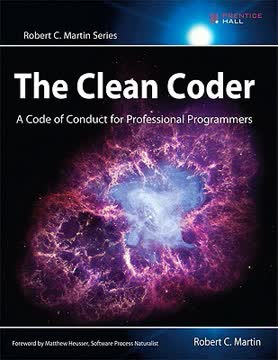

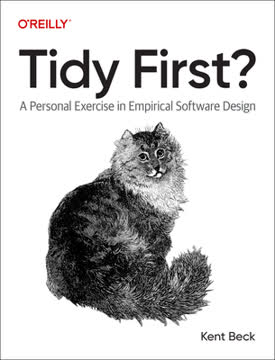

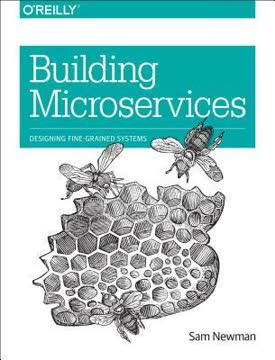
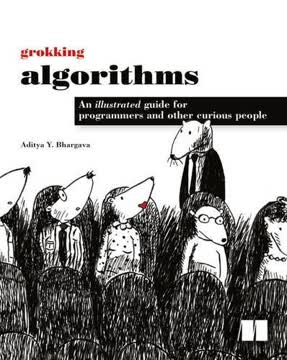
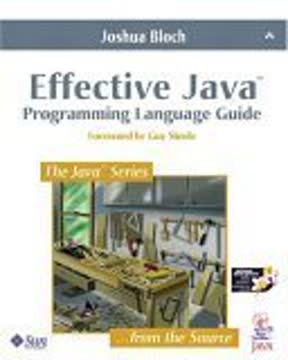

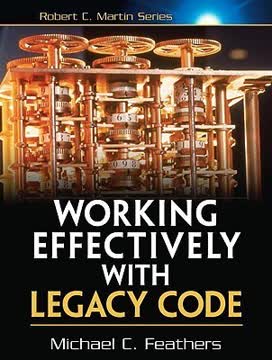

Download PDF
Download EPUB
.epub digital book format is ideal for reading ebooks on phones, tablets, and e-readers.





